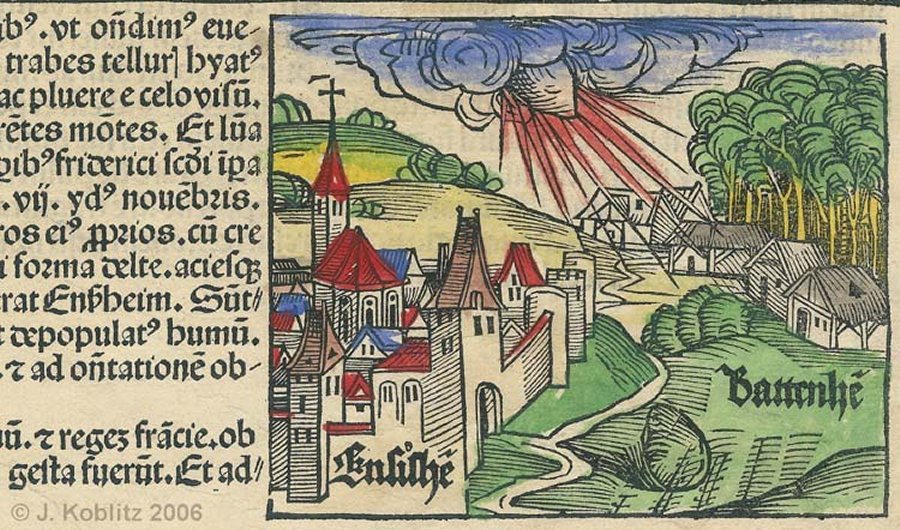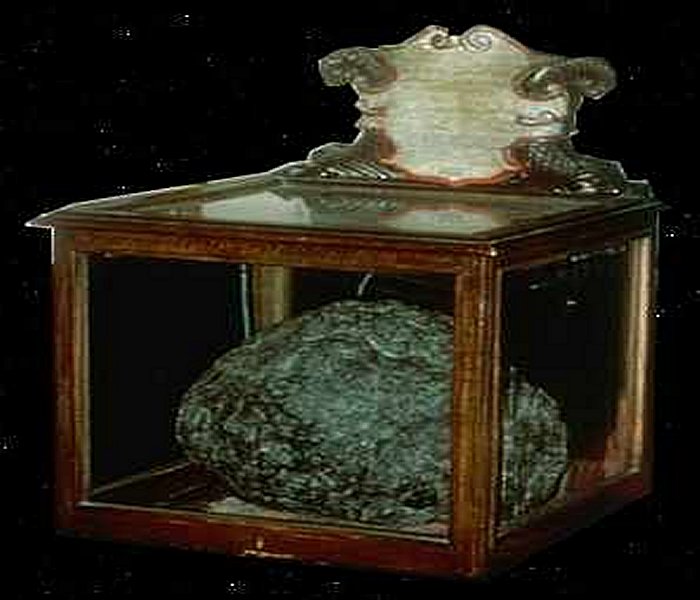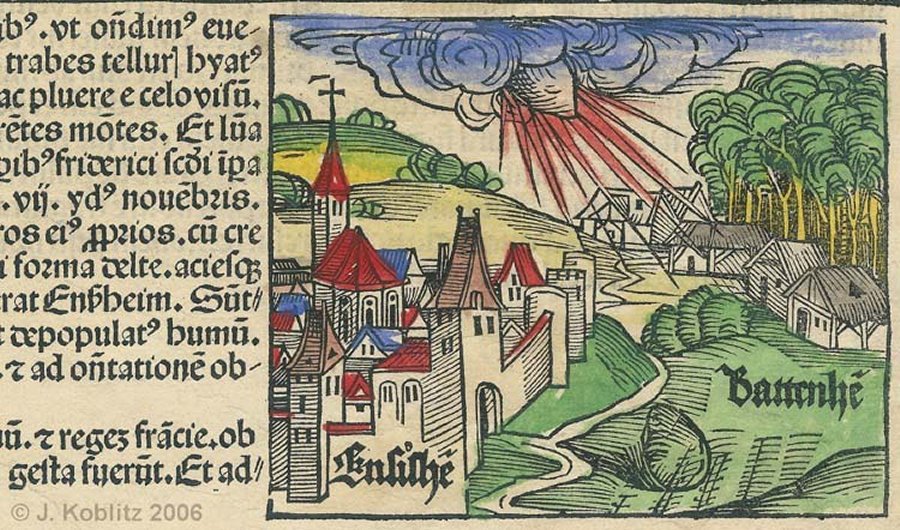MessageToEagle.com – On November 7, 1492, the Ensisheim meteorite was observed to fall in a wheat field outside the walled town of Ensisheim in then Alsace, Further Austria (now France).
It was a stony, triangular -shaped meteorite weighing 127 kilograms, which can still be seen in Ensisheim’s Museum, the sixteenth-century Musée de la Régence.

The meteorite created a 1-metre (3 ft 3 in) deep hole upon impact. The fall of the meteorite through the Earth’s atmosphere was observed as a fireball for a distance of up to 150 kilometers from where it eventually landed.
People living in neighboring areas gathered at the location to raise the meteorite from its impact hole and began removing pieces of the meteorite, which was considered a sign of good luck from God. Many of the fragments later ended up in museums around the world.

According to sources, King Maximilian of Austria heard of the stone that fell from the sky and decided to take a look at the stone. At the time, he was engaged in local battles with the French and believed that the fall was a sign from God, predicting his upcoming military victories.
After removing a piece of meteorite for himself, Maximilian declared that the remains should forever be kept in the church.
The stone remained in the parish church until the time of the French revolution. Later it was placed in a museum in nearby Colmar by French revolutionaries. French scientists also removed some pieces of the meteorite for further study.
The meteorite was returned to the church but by this time it had lost much of its mass. Eventually, the remaining specimen, a rounded gray mass weighing only 55 kg can be seen today at Ensisheim resting in an elegant case in the middle of the main hall of the Regency Palace built in 1535 by the emperor Ferdinand of Austria.
The Ensisheim meteorite is the oldest meteorite whose fall is dated precisely.
MessageToEagle.com







